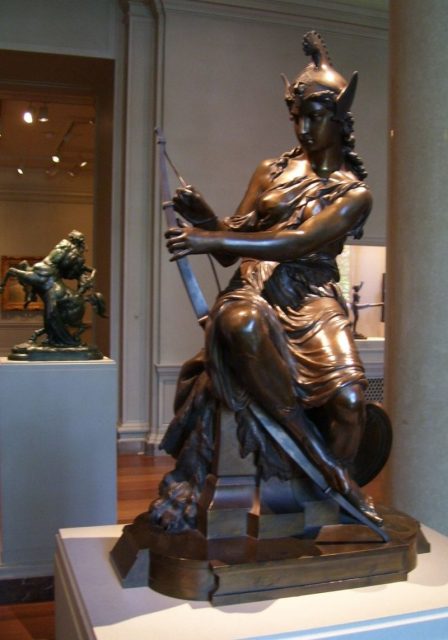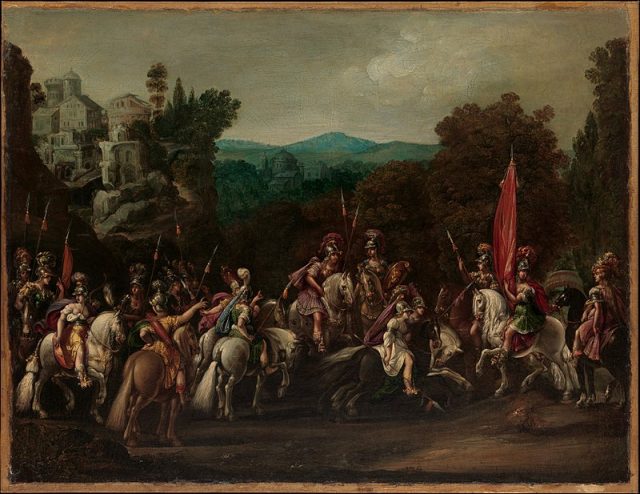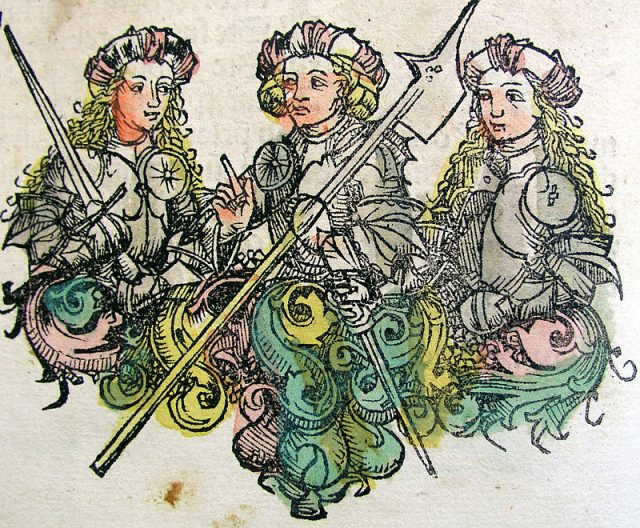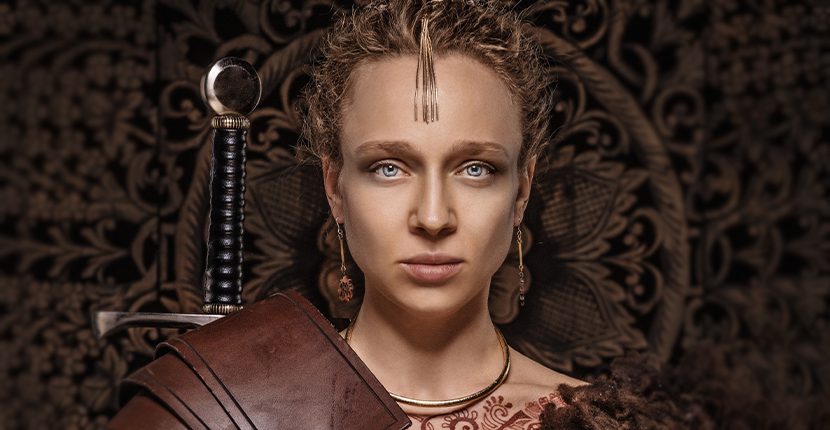Amazons, the warrior women of yore, continue to capture the popular imagination. Is there anyone who hasn’t seen Wonder Woman, the 2017 blockbuster movie starring Gal Gadot in the titular role? The movie was a smash hit around the world and introduced many to the legendary Amazon women. And of course, many viewers still remember the Wonder Woman TV series of the 1970s, starring Lynda Carter as the bracelet wearing, villain slaying powerhouse in tights and a cape.
William Marston created Wonder Woman in 1941, at the beginning of America’s involvement in World War II. (She “starred” as the feature character in a comic in 1943.) A forward-thinking man, particularly considering the era in which he lived, he said once, “not even girls want to be girls so long as our feminine archetypes lack force, strength and power.” Such comments were stunning departures for a man in the 1940s,

Depending on the decade, how Wonder Woman was depicted changed, and she fell in line with societal tastes and popular ideas of womanhood. No one gave much serious consideration to her backstory, a lineage of Amazon women, but they should have. Some scholars even believe such women existed once; not the super powers, perhaps, but the heightened strength and matriarchal culture from which Wonder Woman sprang. Even the great Greek poet Homer mentions Amazon women in his epic tale The Iliad.

Much later, a law professor from Switzerland, Johann Bachofen, published a paper, in 1861, that deviated enormously from common academic thinking of his time, which was that Amazon women were simply myth. Bachofen postulated that in fact they had existed; however, his belief went only so far. In his paper, he argued that their demise was not only inevitable, but necessary: “The triumph of patriarchy brings with it the liberation of the spirit from the manifestations of nature.” In other words, the natural order – men ruling women – was how nature intended it to be.


But many writers took up the cause of women, whether Amazonian or not, including great 19th century writer Friedrich Engels, co-author (with Karl Marx) of the Communist Manifesto. He did not see their demise as beneficial to anyone, least of all women. He wrote in one article, “The overthrow of (matriarchal culture) was the world historical defeat of the female sex. The man took control of the home, also; the woman was degraded and reduced to servitude. She became the slave of his lust, and a mere instrument for the production of children.” There are many women, even today, who would nod silently in agreement with Engels’s assertion.


But the legends of Amazon women – who they were, how they lived, and precisely how powerful they were – persisted throughout the centuries because they were enshrined in art and culture by the Greeks. They used the image in pottery and art, and always the women were depicted as strong warriors. Finally, in the 1990s, an American—Russian team of archaeologist found some real evidence that these women, or at least women very much like them, had indeed existed.

They found skeletons, not in the Amazon, of course, but in the Ural Steppes, near the border of Kazakhstan, of women buried with weapons and spears. They were unusually tall for the period, and had other physical characteristics that fell more in line with Marston’s vision from the 1940s than anything scholars had previously believed. He was almost prescient in his imaginings of Wonder Woman, as though he had peeked into the future and saw these discoveries occurring 50 years hence.
Whether Amazon women truly existed or were solely the product of Greek imaginations and Marston’s modern one is almost irrelevant today, except to historians and scholars.
Related Article: Lynda Carter Struggled Against All Odds to Become the Classic Wonder Woman
Wonder Woman offers a refreshing and important change in the depiction of female characters in superhero movies. She is far more in keeping with the character Marston wrote of all those decades ago. He once said, “Wonder Woman is psychological propaganda for the new type of woman who, I believe, should rule the world.” Put that way, it’s easy to understand why the character resonates so deeply with women today, no matter where they live, in what culture or circumstance.
